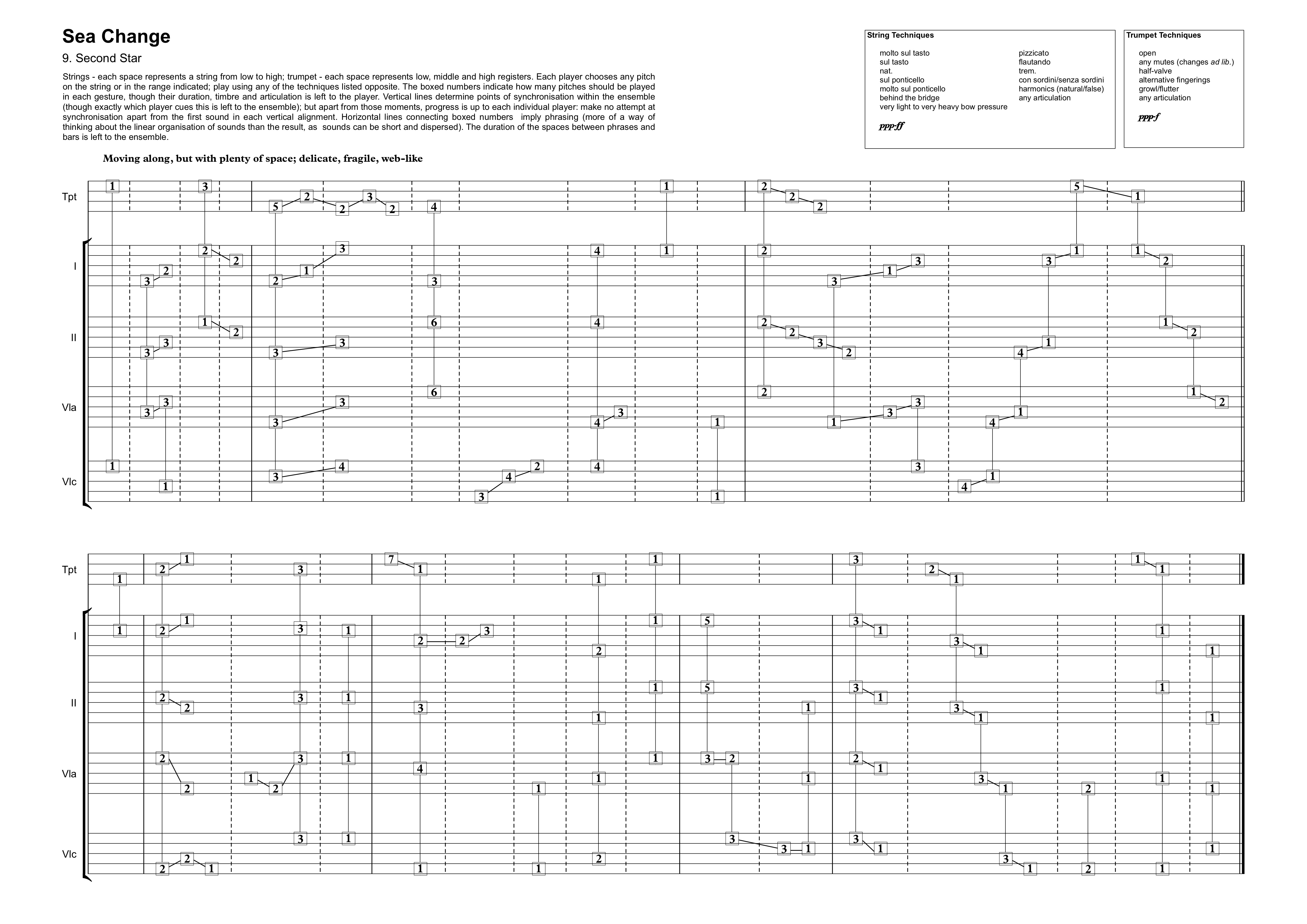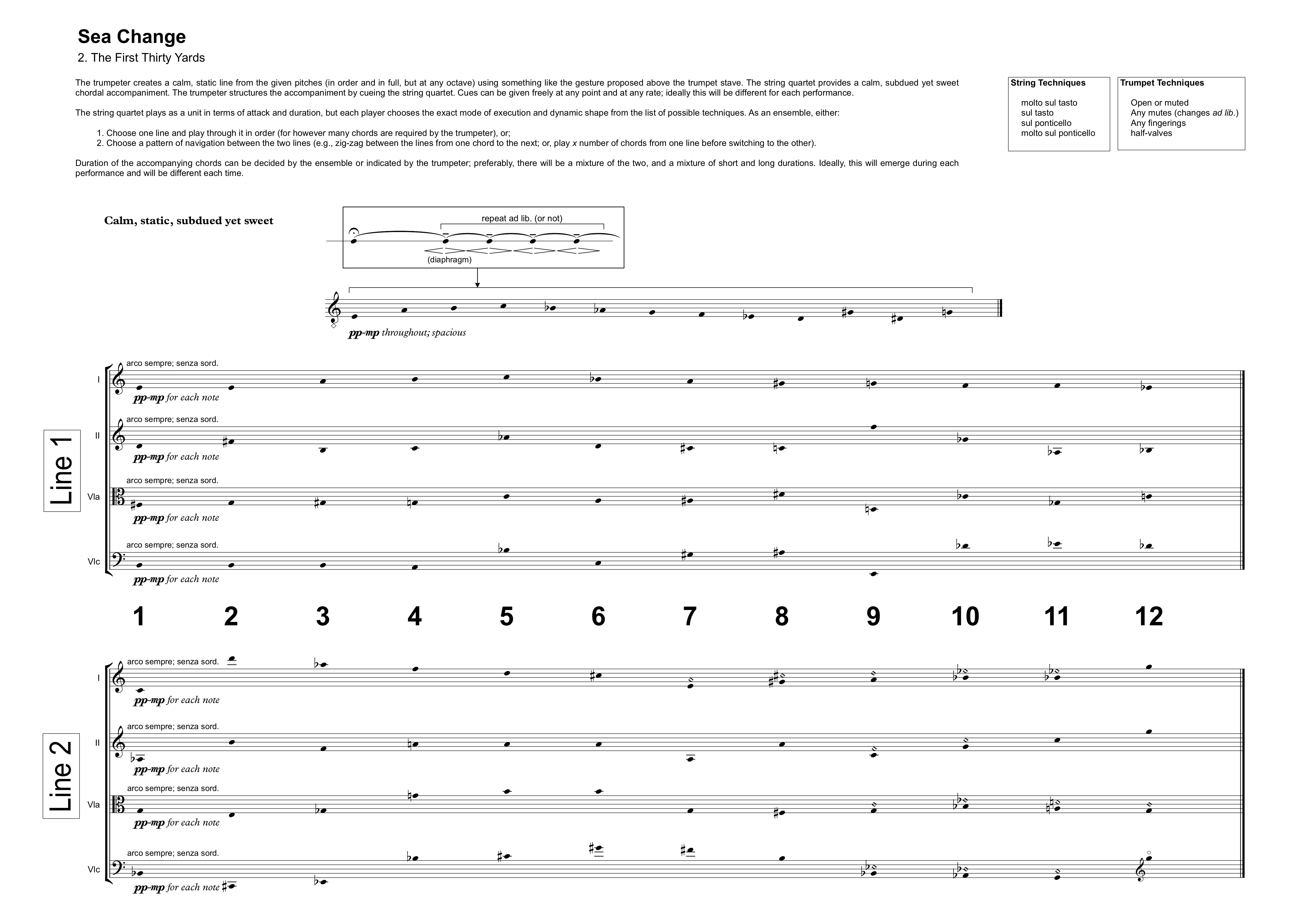Date of composition: May 2017
Instrumentation: Trumpet & string quartet
Duration: 15-25 minutes
First performed on May 8th 2017 at the Ferens Art Gallery in Hull as part of the 2017 City of Culture year; subsequently performed in July 2017 in Tianjin, China.
Sea Change explores notions of structural, notational and improvisatory freedom as a specific response to gallery 11 at the Ferens Art Gallery in Hull. It is from the maritime paintings in this gallery that Spencer Tunick derived the four shades of blue used for the iconic Sea of Hull series of photographs. Going full circle, all of the material for this piece is derived from transcriptions of Tunick speaking about the making of his visual artwork in Hull. Divided into 9 interchangeable sections, the work is designed to be in a constant state of flux, allowing performers to construct foregrounds and backgrounds in an ever-changing, never-to-be-repeated form.
Programme Note
Sea Change for trumpet in C and string quartet is about a series of responses. With nine sections exploring different types of musical materials and notations, the players can arrange these in any order to make their programme for a particular performance; the notations themselves prompt certain responses in the form of improvisations and freedoms within certain limitations. The musical material is based on Spencer Tunick speaking on camera about the making of the recent public artwork ‘Sea of Hull’ (which was being exhibited at the Ferens at the time of writing this piece). Twenty-one extracts of him speaking – particularly evocative lines such as ‘we covered the people with the art of the gallery’ and ‘it was like the aftermath of some great blue war’ – were transcribed in order to extract their pitch and melodic contours; these formed the basis for all of the melodic and harmonic content of my piece. And (this is where it comes full circle), the first performance of the piece will be given in gallery 11 where the paintings from which Tunick derived his four shades of blue for his work are hung. Tunick derived colours from the paintings; I derived pitches from him. The rippling out of artistic responses continues in the way the musicians react to the possibilities built into my piece, which is purposefully ambiguous in places, purposefully open-ended – ready for the next set of responses.



